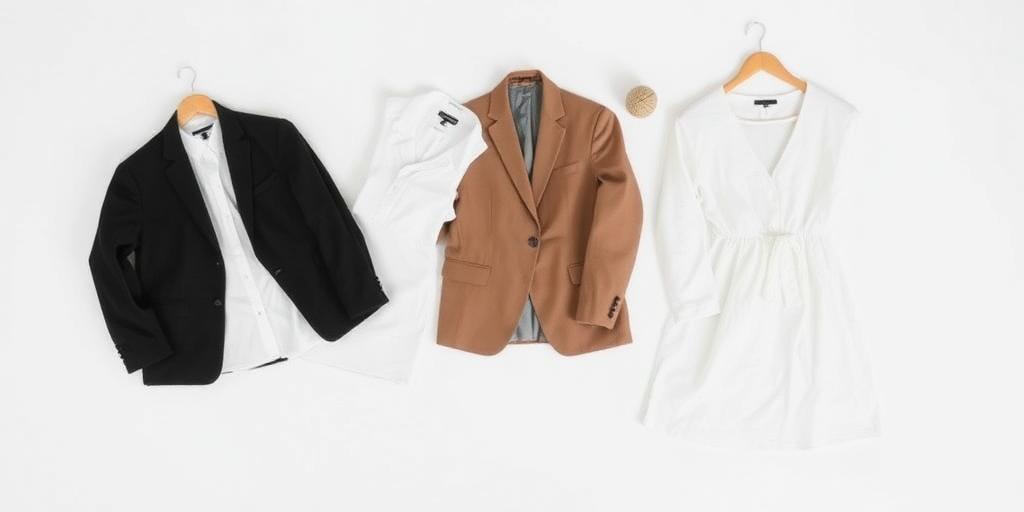In an era increasingly defined by environmental consciousness, the concept of a capsule wardrobe transcends mere minimalist fashion; it emerges as a potent strategy for sustainable living. This authoritative guide elucidates how curating a focused collection of versatile garments can significantly reduce environmental impact, promote ethical consumption, and streamline daily life. Embracing a sustainable capsule wardrobe is not merely a trend, but a foundational shift towards a more intentional and eco-friendly relationship with fashion.
Understanding the Sustainable Capsule Wardrobe
A capsule wardrobe fundamentally consists of a limited number of interchangeable clothing items that can be mixed and matched to create numerous outfits. When integrated with a sustainability ethos, this approach prioritizes:
- Reduced Consumption: Minimizing new purchases, thereby decreasing demand for resource-intensive textile production.
- Durability and Longevity: Investing in high-quality garments designed to withstand extensive wear and last for years.
- Ethical Sourcing: Supporting brands that adhere to fair labor practices and environmentally responsible manufacturing.
- Waste Reduction: Less clothing discarded, diverting textiles from landfills and mitigating pollution.
This strategic approach to clothing acquisition and utilization is paramount for individuals seeking to reduce their fashion footprint and cultivate a more conscious closet.
Phase One: Auditing Your Existing Wardrobe
Before embarking on any new purchases, a comprehensive evaluation of your current clothing inventory is essential.
- Declutter with Purpose: Systematically remove items that are ill-fitting, damaged beyond repair, or no longer align with your personal style or practical needs. Consider donating, reselling, or recycling these garments responsibly.
- Identify Core Pieces: Ascertain which existing items are truly versatile, durable, and frequently worn. These form the potential foundation of your sustainable capsule wardrobe.
- Analyze Lifestyle Needs: Assess your daily activities, professional requirements, and social engagements. Your capsule must reflect the realities of your life to be effective.
This critical initial step provides clarity, preventing redundant purchases and revealing gaps that genuinely require filling.
Phase Two: Curating Your Core Pieces
The objective is to select versatile, high-quality garments that serve multiple purposes. When building a conscious closet, prioritize:
- Neutral Palette: A base of neutral colors (black, white, gray, navy, beige) allows for maximum interchangeability. Accents can be introduced through accessories or a few select colored pieces.
- Classic Silhouettes: Timeless designs transcend fleeting trends, ensuring longevity. Examples include well-fitting trousers, classic shirts, and simple dresses.
- Quality Over Quantity: Invest in durable fabrics like organic cotton, linen, Tencel, or recycled materials. These materials often have a lower environmental impact and higher longevity. Seek transparent brands that openly share their supply chain information.
- Versatility: Each item should ideally be wearable in several different contexts or combinations. For instance, a blazer can elevate a casual outfit or complete a professional ensemble.
This meticulous selection process is key to cultivating minimalist fashion essentials that genuinely serve your needs.
Phase Three: The Art of Thoughtful Shopping
Acquiring new items for a sustainable capsule wardrobe demands intentionality.
- Research Sustainable Brands: Prioritize companies committed to ethical production, fair wages, and environmental stewardship. Look for certifications such as GOTS, Fair Trade, or B Corp.
- Consider Secondhand: Purchasing pre-owned clothing via consignment stores, thrift shops, or online platforms is an excellent way to extend the life cycle of garments and reduce fashion waste.
- Repair and Repurpose: Before considering replacement, explore options for repairing damaged items or altering garments to fit better or serve a new purpose. This commitment to maintaining existing resources is a cornerstone of an eco-friendly wardrobe.
- Avoid Impulse Buys: Adhere to a strict shopping list based on identified gaps. A 30-day waiting period for non-essential items can often prevent regretful purchases.
Maximizing Longevity and Minimizing Environmental Impact
Beyond the initial creation, maintaining a sustainable capsule wardrobe involves ongoing practices:
- Proper Care: Follow garment care instructions diligently. Washing clothes less frequently, using cold water, and air-drying can significantly extend their lifespan and reduce energy consumption.
- Seasonal Rotation: Rather than acquiring entirely new seasonal wardrobes, consider rotating existing pieces and adding a few specific items as needed (e.g., a heavier coat for winter, lighter fabrics for summer).
- Mindful Discarding: When an item has truly reached the end of its useful life, explore textile recycling programs or creative upcycling projects rather than simply discarding it.
Conclusion
Establishing a sustainable capsule wardrobe is a powerful commitment to responsible consumption and a greener lifestyle. By fostering a deeper understanding of our clothing choices and actively participating in the circular economy, we can collectively mitigate the pervasive environmental and social costs associated with fast fashion. This approach cultivates not only a more organized and efficient personal style but also contributes significantly to a more sustainable future, proving that conscious choices in fashion can indeed make a tangible difference.









